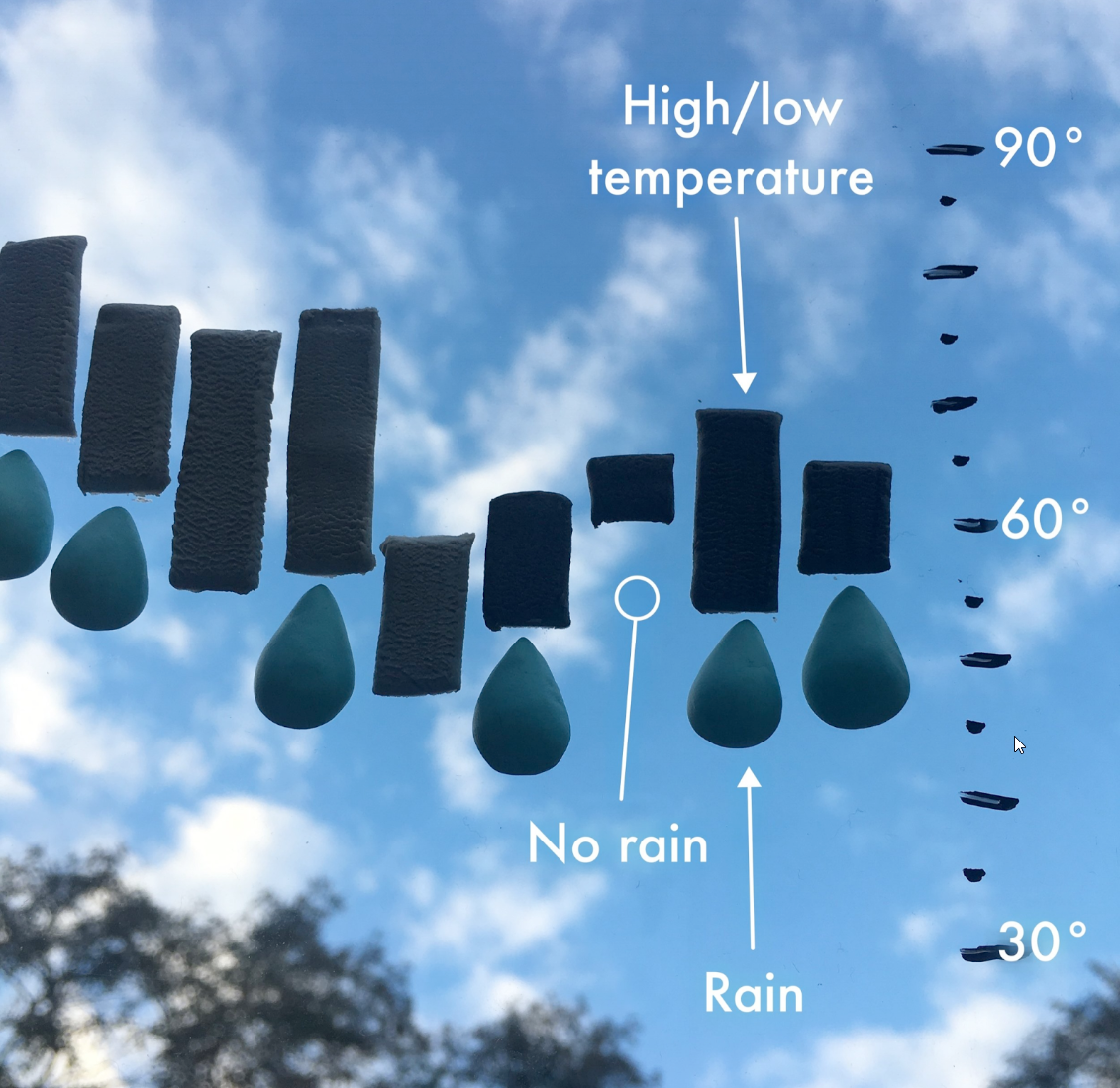Climate change and global warming is a hot topic and on everyone’s mind these days. Still, communicating the crisis that is upon us is not always easy.
We strongly believe that telling stories with visuals makes the message easier to understand and act upon.
In this article we provide some visualizations that you can use as an inspiration to tell a more compelling story about the climate yourself.
Some of the graphs we’ll be using were originally created by everviz’s client Norsk klimastiftelse (Norwegian Climate Foundation).
The Norwegian Climate Foundation is a Norwegian green think tank. They were established in 2010 as a non-commercial foundation working for a society without emissions of man-made greenhouse gases. The Climate Foundation is headquartered in Bergen and works widely in the field of climate and energy.
The foundation conducts extensive publicist work, including through the online magazine Energi og Klima, the communication project 2° C, by publishing current reports and notes and by inviting knowledge sharing and informed discussion at Klimafrokoster and other events.
The development of atmospheric carbon dioxide – CO2
CO2 is considered the most important heat-trapping (greenhouse) gas, which is released through human activities such as deforestation and burning fossil fuels, as well as natural processes such as respiration and volcanic eruptions.
It is generally accepted that C02 is the largest contributor to man-made global warming.
In 2020, emissions of carbon dioxide (CO2) from fossil energy and industry fell by 5.4 percent compared to the level in 2019, to 34.8 billion tonnes, according to a research report from the Global Carbon Project. This is by far the largest decrease in emissions recorded since the measurements began.
But this Corona reduction was short-lived. Forecasts for emissions in 2021 from the Global Carbon Project show that CO2 emissions will grow again to about 36.4 billion tonnes, slightly below the level from before the pandemic in 2019. The main reason is a sharp increase in consumption of coal and gas.
Since 1751 just over 400 billion metric tonnes of carbon have been released to the atmosphere from the consumption of fossil fuels and cement production. Half of these fossil-fuel CO2 emissions have occurred since the late 1980s.
This graph shows annual mean carbon dioxide growth rates based on globally averaged marine surface data.
The annual mean rate of growth of CO2 in a given year is the difference in concentration between the end of December and the start of January of that year. It represents the sum of all CO2 added to, and removed from, the atmosphere during the year by human activities and by natural processes.
The graph show monthly mean carbon dioxide measured at Mauna Loa Observatory, Hawaii. The carbon dioxide data on Mauna Loa constitute the longest record of direct measurements of CO2 in the atmosphere. They were started by C. David Keeling of the Scripps Institution of Oceanography in March of 1958 at a facility of the National Oceanic and Atmospheric Administration [Keeling, 1976]. NOAA started its own CO2 measurements in May of 1974, and they have run in parallel with those made by Scripps since then [Thoning, 1989].
Data are reported as a dry air mole fraction defined as the number of molecules of carbon dioxide divided by the number of all molecules in air, including CO2 itself, after water vapor has been removed. The mole fraction is expressed as parts per million (ppm). Example: 0.000400 is expressed as 400 ppm.
The green line represent the monthly mean values, centered on the middle of each month. The red line represent the same, after correction for the average seasonal cycle. The latter is determined as a moving average of seven adjacent seasonal cycles centered on the month to be corrected, except for the first and last three and one-half years of the record, where the seasonal cycle has been averaged over the first and last seven years, respectively.
China’s significance for global CO2 emissions is striking. China surpassed the United States as the country with the largest emissions of CO2 from fossil energy and industry in 2006. In 2020, China accounted for 10.7 billion tonnes of CO2 in the world, according to researchers in the Global Carbon Project (see figure).
The United States accounted for 14 percent and the EU and India 7 percent. Together, the four largest emitting countries / regions accounted for 59 per cent of global fossil CO2 emissions in 2020.
The sources of human CO2 emission
There are both natural and human sources of C02 emissions. Natural sources include ocean release, decomposition and respiration. The most prominent human sources are activities such as burning of fossil fuels like coal, oil and natural gas, plus deforestation and cement production.
A lot of human C02 emissions are related to energy production and consumption.
The burning of fossil fuels for energy began around the onset of the Industrial Revolution. But fossil fuel consumption has changed significantly over the past few centuries – both in terms of what and how much we burn.
In this chart we see global fossil fuel consumption broken down by coal, oil and gas since 1800. Earlier data, pre-1965, is sourced from Vaclav Smil’s work on energy transitions; this has been combined with data published in BP’s Statistical Review of World Energy from 1965 onwards.1
Fossil fuel consumption has increased significantly over the past half-century, around eight-fold since 1950, and roughly doubling since 1980.
But the types of fuel we rely on has also shifted, from solely coal towards a combination with oil, and then gas. Today, coal consumption is falling in many parts of the world. But oil and gas are still growing quickly.
This data presents primary energy consumption via the ‘substitution method’. The ‘substitution method’ – in comparison to the ‘direct method’ – attempts to correct for the inefficiencies (energy wasted as heat during combustion) in fossil fuel and biomass conversion. It does this by correcting nuclear and modern renewable technologies to their ‘primary input equivalents’ if the same quantity of energy were to be produced from fossil fuels.
The direct effects and consequences of CO2 emission
2020 and 2016 were the two warmest years measured, according to data from several research groups that measure global average temperatures.
NASA has measured 2020 as the warmest year, while the measurements of NOAA, Copernicus, the Met Office Hadley Center and Berkeley Earth have 2020 as the second warmest after 2016. The difference between the two years is so small that it is reasonable to see them as equally warm.
The temperature in 2016 was affected in a warmer direction by a particularly strong version of the El Niño weather phenomenon in the Pacific Ocean. In 2020, it was instead a La Niña incident, which probably had a cooling effect in the second half of the year. Therefore, it is startling that 2020 could be as hot as 2016, several climate researchers believe. This shows the strong impact of greenhouse gas emissions on global temperatures.
The global average temperature in 2020 was 1.13 ° C higher than in pre-industrial times. These statistics apply to the combined temperature above land and at sea level. The value is calculated on the basis of millions of individual measurements.
The term temperature anomaly means a departure from a reference value or long-term average. A positive anomaly indicates that the observed temperature was warmer than the reference value, while a negative anomaly indicates that the observed temperature was cooler than the reference value.
Global temperature anomaly data come from the Global Historical Climatology Network-Monthly (GHCN-M) data set and International Comprehensive Ocean-Atmosphere Data Set (ICOADS), which have data from 1880 to the present.
This data and graph contains “cumulative changes in sea level for the world’s oceans since 1880, based on a combination of long-term tide gauge measurements and recent satellite measurements. It shows average absolute sea level change, which refers to the height of the ocean surface, regardless of whether nearby land is rising or falling. Satellite data are based solely on measured sea level, while the long-term tide gauge data include a small correction factor because the size and shape of the oceans are changing slowly over time. (On average, the ocean floor has been gradually sinking since the last Ice Age peak, 20,000 years ago.)”
This graph shows average cumulative mass balance of “reference” Glaciers worldwide from 1945-2014 sourced from US EPA and the World Glacier Monitoring Service (WGMS). This is cumulative change in mass balance of a set of “reference” glaciers worldwide beginning in 1945. The values represents the average of all the glaciers that were measured. Negative values indicate a net loss of ice and snow compared with the base year of 1945. For consistency, measurements are in meters of water equivalent, which represent changes in the average thickness of a glacier.


